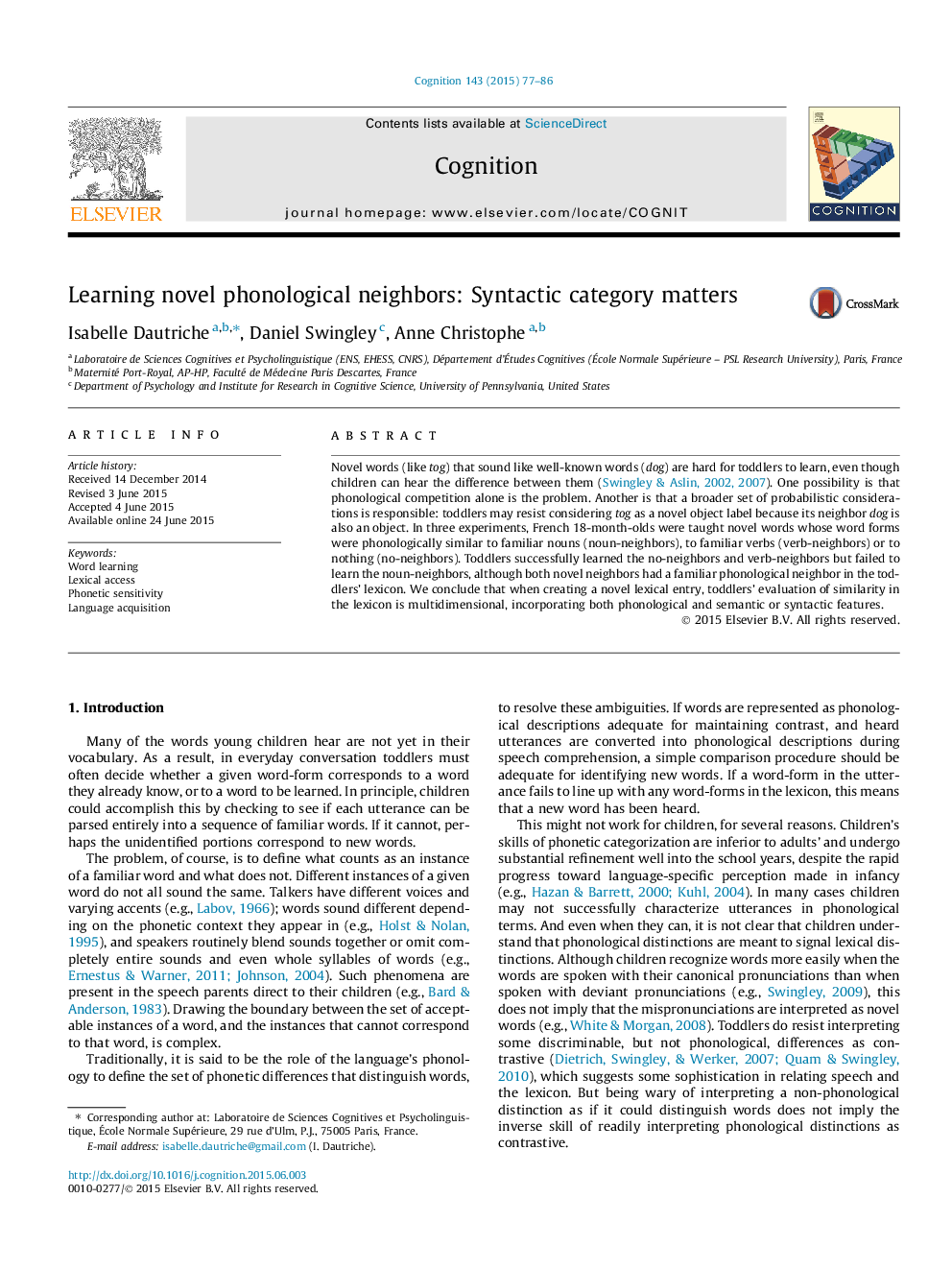| کد مقاله | کد نشریه | سال انتشار | مقاله انگلیسی | نسخه تمام متن |
|---|---|---|---|---|
| 7286660 | 1474124 | 2015 | 10 صفحه PDF | دانلود رایگان |
عنوان انگلیسی مقاله ISI
Learning novel phonological neighbors: Syntactic category matters
ترجمه فارسی عنوان
یادگیری همسایگان فنولوژیک رمان: مقدمه ای است که در آن موضوع مهم است
دانلود مقاله + سفارش ترجمه
دانلود مقاله ISI انگلیسی
رایگان برای ایرانیان
کلمات کلیدی
موضوعات مرتبط
علوم زیستی و بیوفناوری
علم عصب شناسی
علوم اعصاب شناختی
چکیده انگلیسی
Novel words (like tog) that sound like well-known words (dog) are hard for toddlers to learn, even though children can hear the difference between them (Swingley & Aslin, 2002, 2007). One possibility is that phonological competition alone is the problem. Another is that a broader set of probabilistic considerations is responsible: toddlers may resist considering tog as a novel object label because its neighbor dog is also an object. In three experiments, French 18-month-olds were taught novel words whose word forms were phonologically similar to familiar nouns (noun-neighbors), to familiar verbs (verb-neighbors) or to nothing (no-neighbors). Toddlers successfully learned the no-neighbors and verb-neighbors but failed to learn the noun-neighbors, although both novel neighbors had a familiar phonological neighbor in the toddlers' lexicon. We conclude that when creating a novel lexical entry, toddlers' evaluation of similarity in the lexicon is multidimensional, incorporating both phonological and semantic or syntactic features.
ناشر
Database: Elsevier - ScienceDirect (ساینس دایرکت)
Journal: Cognition - Volume 143, October 2015, Pages 77-86
Journal: Cognition - Volume 143, October 2015, Pages 77-86
نویسندگان
Isabelle Dautriche, Daniel Swingley, Anne Christophe,
